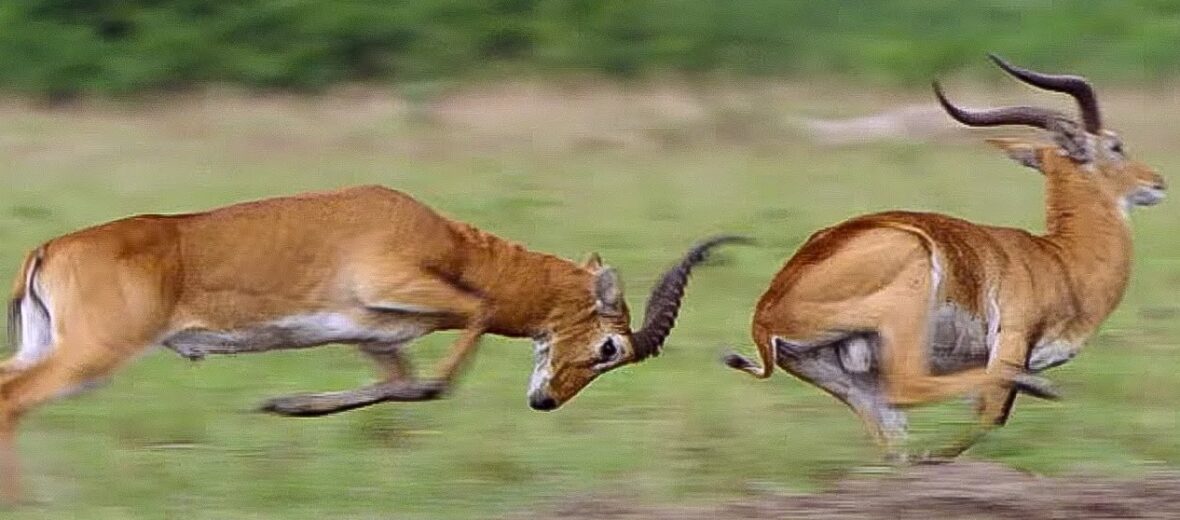
Even though the kob is still numerous in Western Uganda, they are far less common now in East Africa. They were once found in Western Kenya and Northern Tanzania but are sparse if they exist there at all. Kobs do still inhabit sub-Saharan Africa. They like low-lying flats and rolling country sides with more consistent temperatures and access to permanent water sources.
First the Stats…
Scientific name: Kobus kob
Weight: Up to 265 lbs.
Length: Up to 5.6 feet
Height: up to 3 feet, at the shoulder
Lifespan: Up to 17 years
Now on to the Facts!
1.) They live in groups of up to 40 members, on average.
2.) Their antlers are up to 20 inches long!
3.) Like many other undulates (hoofed animals), kobs are diurnal (active during the day).
4.) In a lek, 20 – 200 male kobs defend territories 45 – 600 feet in diameter. The center of the lek is where most of the mating occurs.
5.) Females can mate after 1 year of age and males after 1.5 years.
But wait, there’s more on the kob!
6.) Only fully mature males can compete in the lek. Younger males stay with the females and young.
7.) In Cameroon the kob ranked as the third most favored species of bush meat, 2nd only to the guinea fowl and North African porcupine.
Did you know…?
Kobs are sexually dimorphic (males and females look different) in that males have horns and females don’t. Males are also quite a bit larger than females.
8.) Outside of the mating season, the males live in separate herds than the females and their young. The males have no part in raising the young.
9.) After up to an 8 month gestation (pregnancy) the female will birth a single calf.
10.) Competition for the central territories is intense, and males typically only hold their territories for about a day or 2 before another male steps in.
Now a Short Kob Video!
Also, check out the Critter Science YouTube channel. Videos added frequently!
Want to suggest a critter for me to write about? Let me know here.



